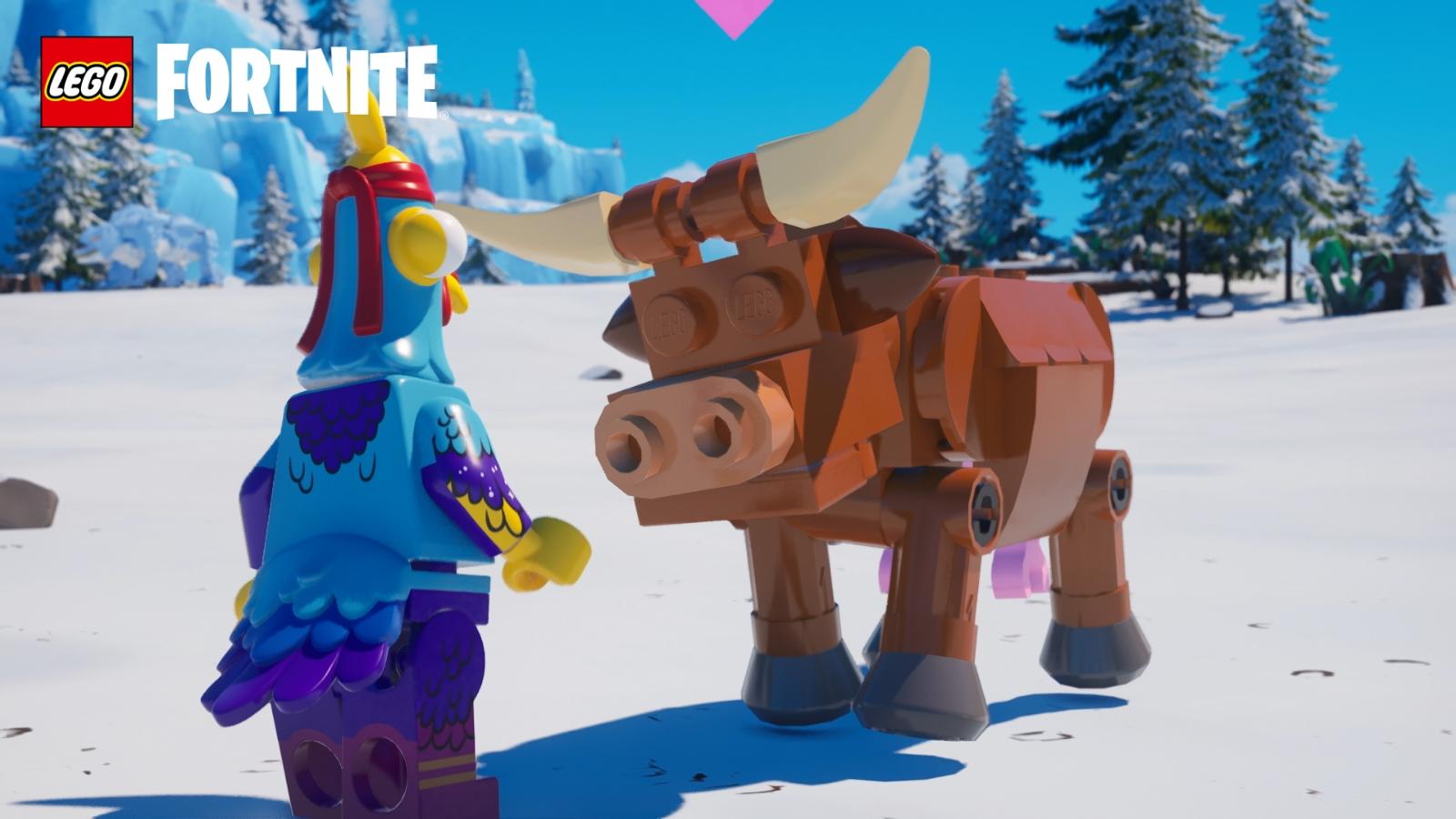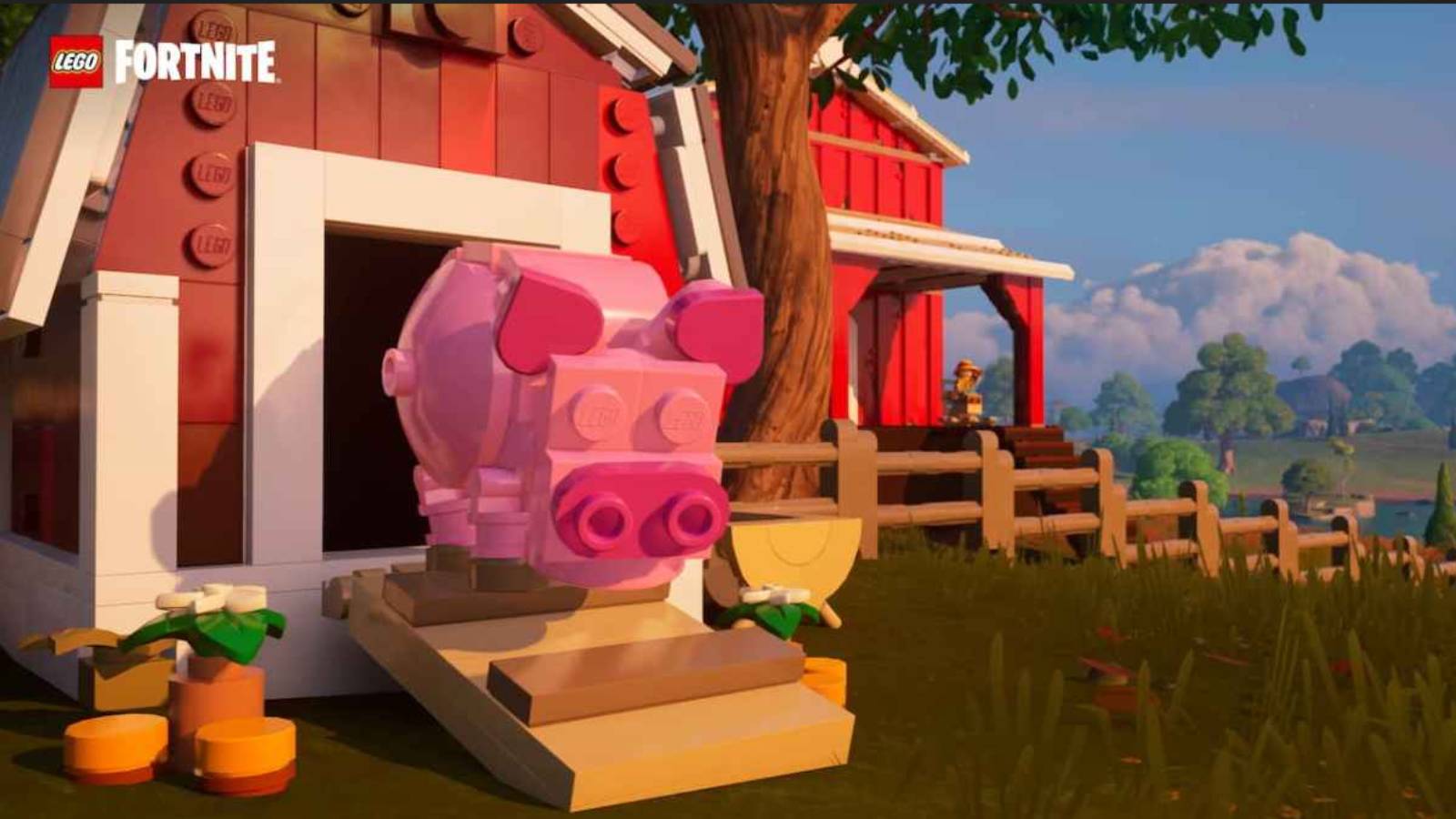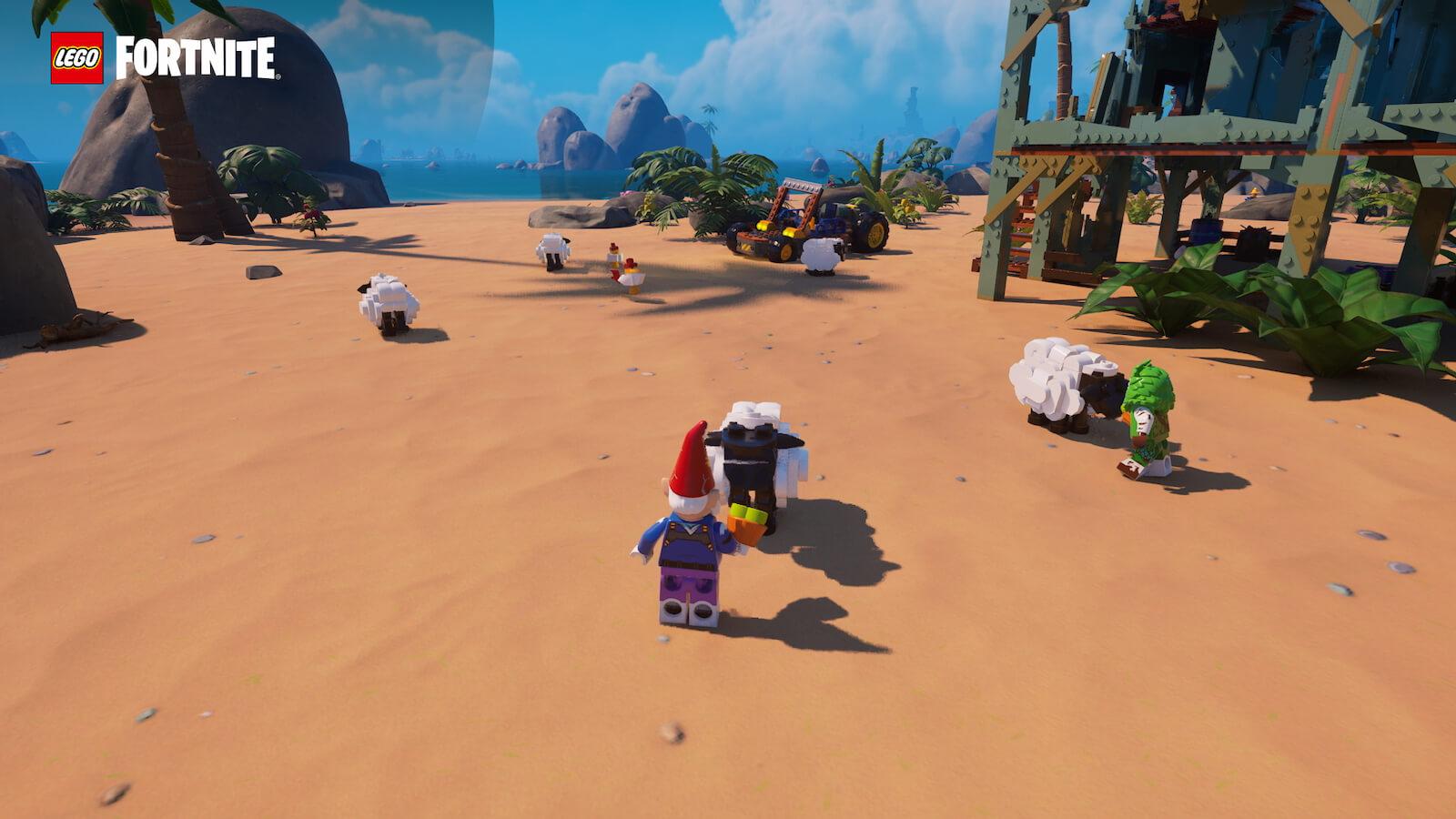Epic Games Explain Everything Wrong with Fortnite Summer Skirmish Week 1 – Lag, Eliminations, Format and More
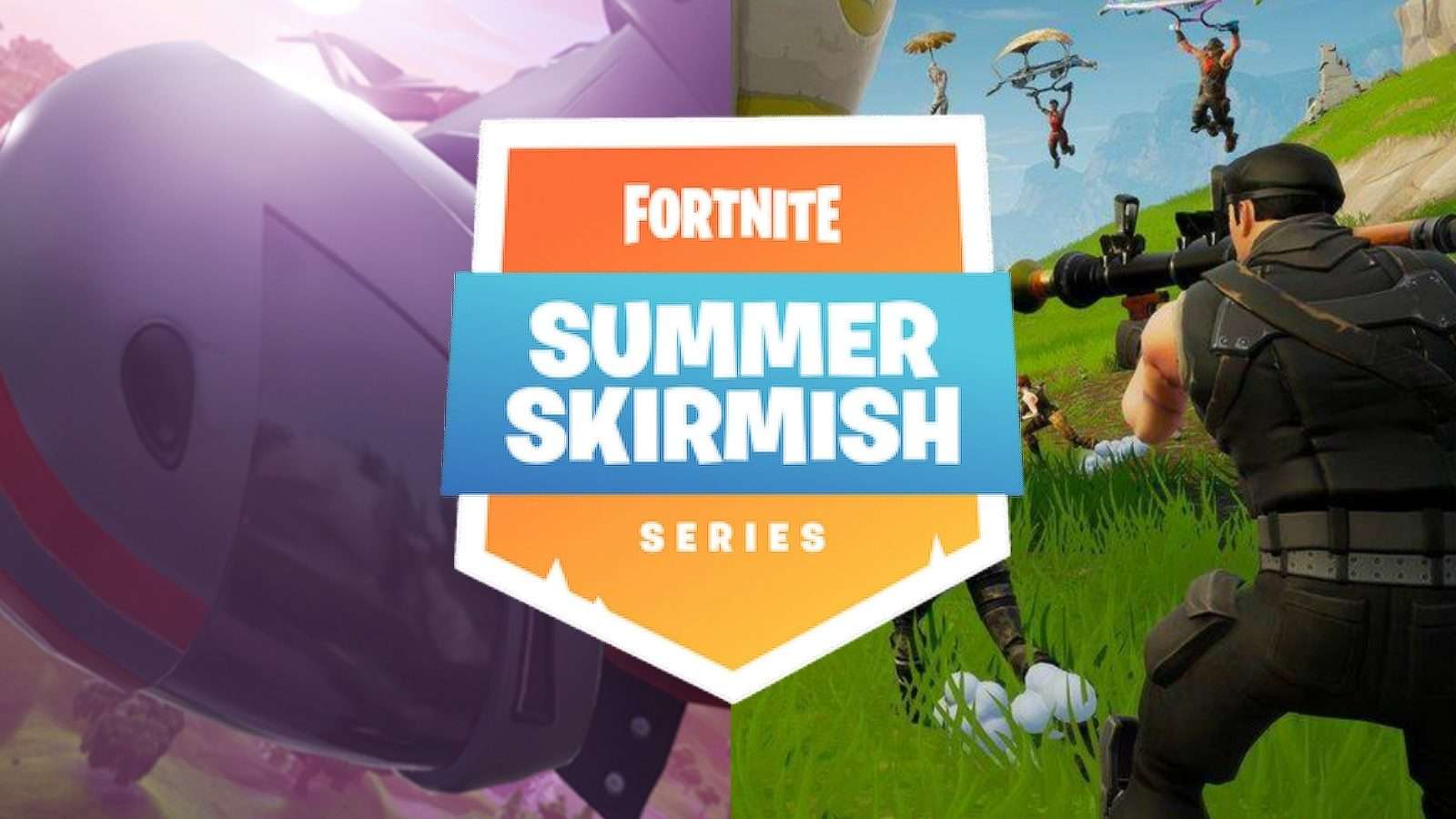
Epic Games has released a complete ‘postmortem’ of the first week of Summer Skirmish, which saw a $250,000 duos tournament cut short due to various issues.
The main problem was the lag which affected nearly all players and made the experience very difficult for both the participants and viewers.
[ad name=”article1″]
On top of the lag however, the format itself was also criticized, with not enough emphasis placed on eliminations many complained that the action was not as aggressive and fast paced, with competitors playing for the win at all costs.
In response to the criticizms, and ahead of the second week of Summer Skirmish (rumored to be a $500,000 solos tournament), Epic has provided a complete breakdown of what went wrong and how it will be improved.
[ad name=”article2″]
SUMMER SKIRMISH WEEK 1: POSTMORTEM
Hey Fortnite folks,
Let’s talk about Week 1 of Summer Skirmish – it did not go as planned, but we definitely learned a lot!
It represented the first time we’ve been able to bring together a high concentration of some of Fortnite’s most talented players and community creators all in one game. We experienced many pain points from a server performance standpoint and feel we under delivered for the premiere of online competition in Fortnite. While we often run tests to learn how the servers will perform, having significant prizes on the line changed gameplay behavior significantly. In addition, since we chose to highlight the streams of players in the event, most players stayed in the game to spectate after they were eliminated. The combination of these two things led to a gameplay experience that was much worse than we expected.
So let’s unpack what happened, what we’ve learned, and what’s next …
Server Performance
We believe that there are number of factors that caused the poor server conditions during this event. This includes the number of players still alive in the later circles, the number of players that stayed connected to spectate until the end, and the amount of dense building that occured late in the matches. Our top priority now is to understand and optimize server performance in these situations. For example, when an explosion damages a large number of building pieces, and each piece needs to send that event to a large number of connected clients, we get a big spike in server CPU load. We have a lot of ideas about how to handle cases like this better, and are working on that right now. We also think that this work will improve server performance for other intense modes like 50v50.
Live Environment Elimination Curves vs. Skirmish Week 1
Players Left by Circle Radius (Density)
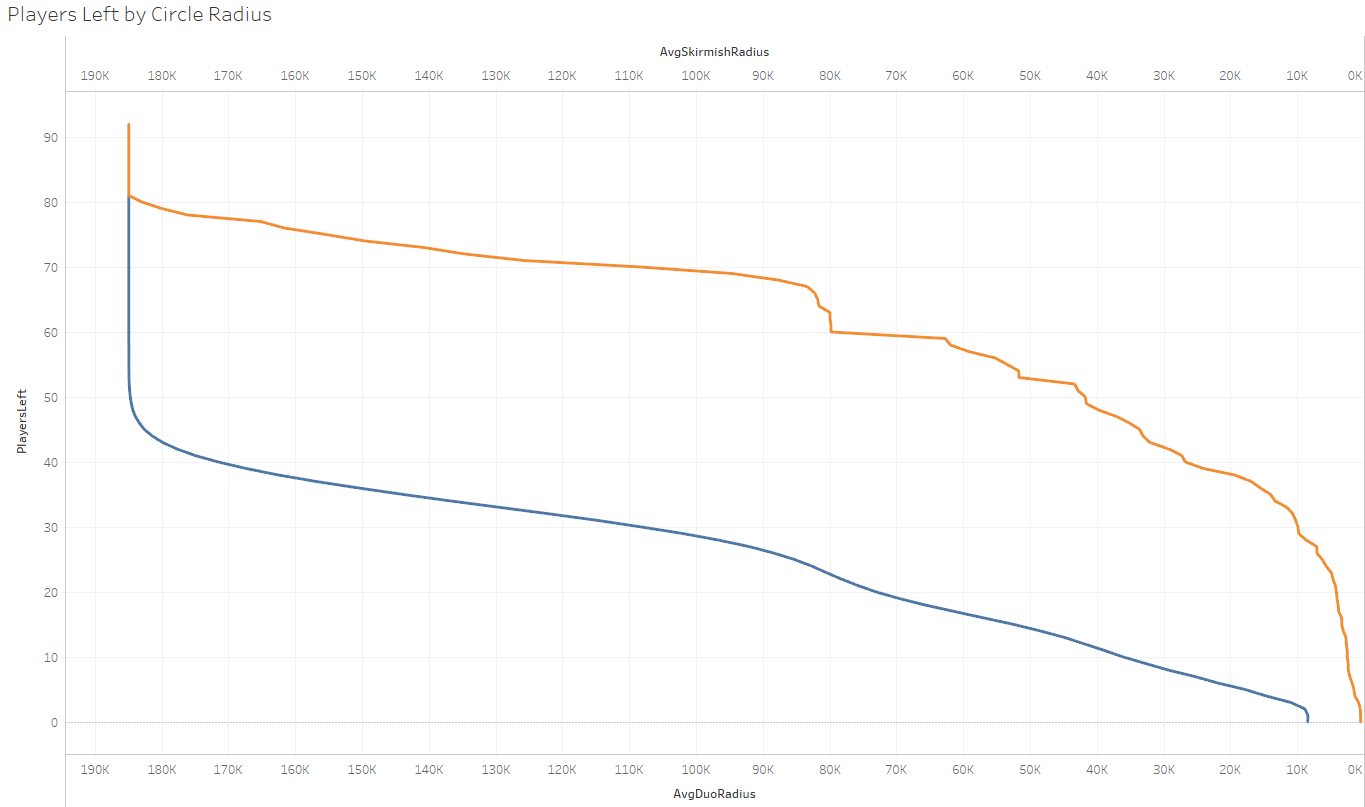 Orange = Skirmish | Blue = Normal Duos
Orange = Skirmish | Blue = Normal DuosCallouts – Where normally 10 people alive, 50 in skirmish. Where normally winner, 30 alive in skirmish
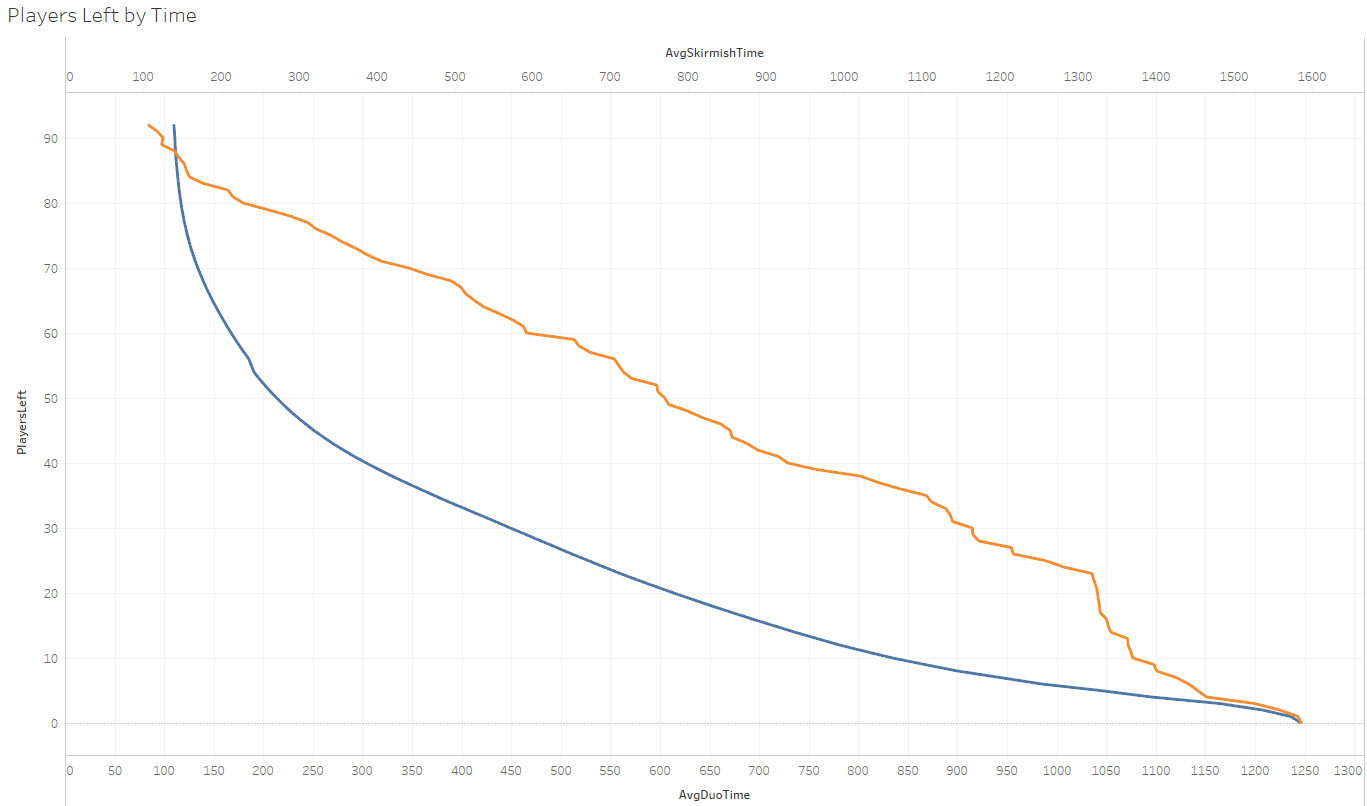
Features & Formats
We launched Summer Skirmish ahead of the competitive systems we are actively building and establishing as a way to both highlight the amazing talent in the Fortnite community and to explore the possibilities of competitive Fortnite while those systems are being developed. The learnings from the competition are great indicators for what features and formats we need to improve or rework. At the Fortnite Pro-Am event we unveiled our Spectator feature, which is not currently available on the live environment. The combination of these factors created a broadcast that relied on highlighting community members that are streaming their point of view for the event.
We love the broadcast format because we have the opportunity to spotlight different individuals in the community. The format doesn’t however, allow for the same contextual storytelling that is available through the Live Spectator feature. It’s incredibly apparent in situations where there’s a lot of building going on in the final few circles.
Building Meta
Week 1 also illustrated some of the difficult player vs. player engagement scenarios with so many talented builders under one roof. Complicated, snaking tunnels make it difficult to follow the action, but also amplify the lack of it (action).
We’re thinking carefully about how to address late-game building for long-term health of competitive play.
[ad name=”article4″]
Placement and Eliminations
We’re eager to mix up formats to keep things exciting and entertaining during the Summer Skirmish series. Each week we’ll get to see how incentivizing different elements of the format influences competitor’s decisions. The key takeaways for any formats are the learnings gained in understanding differences in play patterns between public match play and the Private Match environment with a lot of talented players playing against each other.
We are curious to see how more elimination heavy incentives influence play, though we want to retain the core values and play experiences that everyone else can relate to in-game. Creating complicated scoring systems can be confusing and anticlimactic if they’re not a part of the core play experience. The one-life survival dynamic creates tough real-time decisions for competitors. Each engagement against similarly skilled opponents presents a risk assessment scenario that is typically not apparent for those competitors (or viewers) when observed in public matches.
Competitors generally need to expend a lot of resources (ammo, health, materials) when attempting to eliminate their opponents. And in team-based play (Duo or Squads) they’re also required to spend additional resources to secure the elimination against a downed opponent. Tactical play becomes more beneficial than flashy play – and that’s where we’ll need to strike the balance.
For week 2 we’ll be exploring a public server format where we’ll be tracking competitor’s performance over a period of 10 games. We intend to pick back up on Private Match play in week 3 of the Summer Skirmish series while we work on server performance issues we experienced this past weekend.
We’ll have full details available on the format and list of invited players available on Friday!
Source: Epic Games
